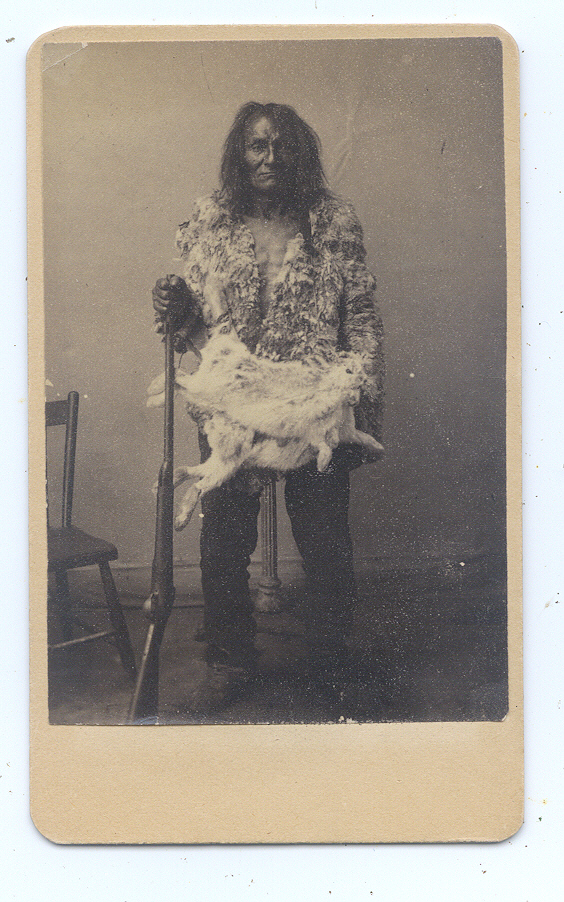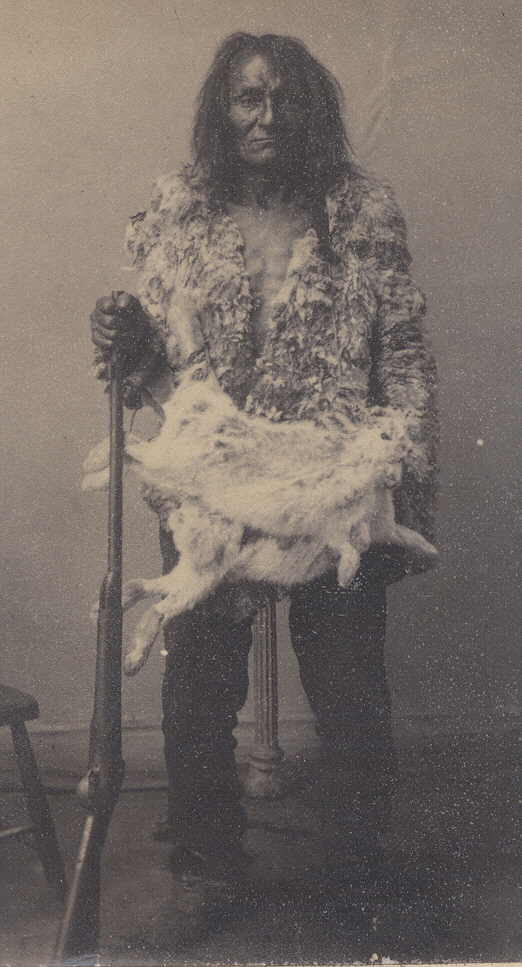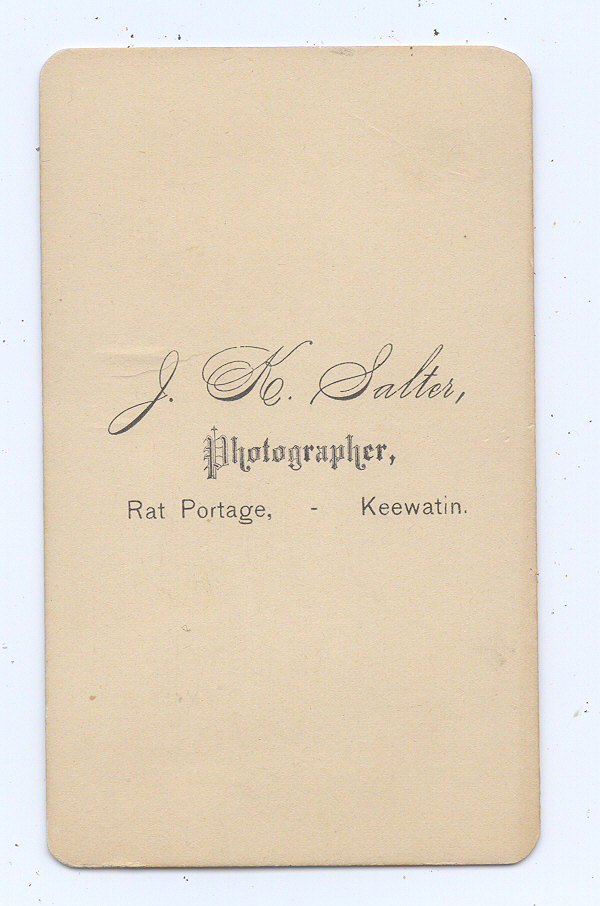Lot 58
Lot 58
Extraordinary CDV of a First Nations hunter and/or trapper holding his rifle and his prized snowshoe hare pelts. His fur shirt is incredible and the detail in his face shows a long outdoor life.
According to the Canadian Encyclopedia, “ Wauzhushk Onigum Nation (pronounced Waa-JUSHK oh-KNEE-gum), … is an Anishinaabe community based on the north shore of Lake of the Woods in northwestern Ontario. Both Kenora and Wauzhushk Onigum’s reserve were originally called Rat Portage because roughly translated Wauzhushk Onigum means “portage to the country of the muskrats.” In 1886, the Government of Canada seized Wauzhushk Onigum’s Sultana Island under the guise of benefiting the First Nation. Sultana Island is located in the Lake of the Woods, and at the time was part of Wauzhushk Onigum’s reserve lands. Five years earlier, in 1881, prospectors had discovered gold on the island. According to oral history of Treaty 3 negotiations, Lieutenant-Governor Alexander Morris promised First Nations monetary benefits from mineral deposits on reserve. This promise was broken. During its operation between 1891 and 1906, the Sultana gold mine was the leading gold producer in Ontario. Wauzhushk Onigum, however, did not benefit from it. The First Nation eventually settled this grievance through a specific claim.”
The First Nation next generation continued to be abused in the Catholic schools with many dying. “In the summer of 1974, the Ojibway Warrior Society occupied Anicinabe Park, located just south of Kenora and on traditional territory. The occupation was in direct response to the way First Nations people were being treated in Canada. One focal point was the mercury contamination at Grassy Narrows, but people gathered for other reasons, too. Their demands included improved living conditions for First Nations people, such as access to housing and education. The occupation lasted six weeks, from mid-July to late August. While the protest ended peacefully, it exposed the deep-seated racism that prevailed in Northwestern Ontario.”
The CDV is in excellent minus condition with strong tones and nice contrast and a little wear as seen. By J.K. Salter, Rat Portage, Keewatin. Salter’s Native American images aren’t often available so grab this one while you can!


